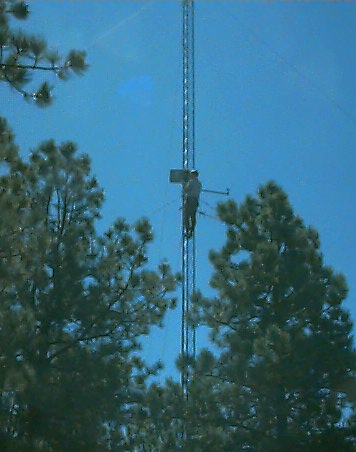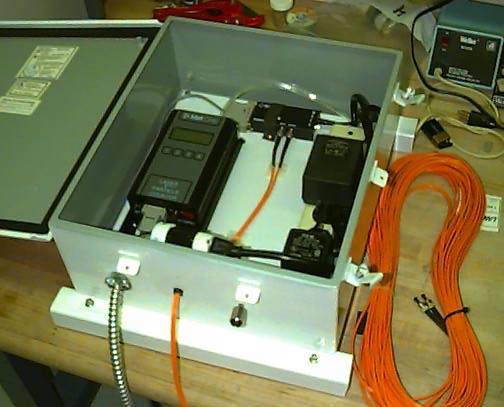
This experiment is intended to monitor airborne dust levels for a period of at least several months for comparison with other weather data and coronal sky brightness measurements. The information will ultimately be used for determining the degree of dust control necessary for the CLEAR telescope and the suitability of possible telescope sites.
The dust counter is a small portable unit, the Met One model 227B. It works by drawing air through a tube into the counter, where photodiodes measure the light produced by an infrared laser and scattered by the dust particles. The air pump draws 0.1 cubic foot of air per minute through the counter. The counter is automatically run for one minute every 15 minutes. Therefore to obtain the number of particles per cubic foot one multiplies the raw counts (the numbers in the weather log) by 10. The counter has two channels. The lower channel is fixed and countings particles greater than 0.3 microns in size. The upper channel can count particles greater than 0.5, 1.0, 3.0, or 5.0 microns in size. Initially we used the 0.5 micron setting.
The enclosure has been mounted about 50 feet up on the Apache Point Observatory weather mast. Dust data with the upper channel of the dust monitor set to 0.5 microns was obtained between April 9 and May 7. The upper channel of the dust monitor was changed from 0.5 microns to 1.0 microns on Tuesday May 7. Here is a picture of Walt Siegmund on the mast changing the dust data channel.

Here is a closeup of the counter in the enclosure.

The ports on the bottom of the enclosure for the armored power cable, the fiber optic cables, and the isokinetic dust probe can be seen.
Results of dust measurements with upper channel at 0.5 microns.
Results of dust measurements with upper channel at 1.0 microns.
Back to John Varsik's home page.
Last updated May 21, 1996.